Trying again the Waller Flag at IV3PRK – part 3
Testing it
I made some tests with my usual 1.843.2 oscillator (see test-oscillator.htm ) placed at about 200 m. distance from the Waller Flag in the NNW direction.
At first I checked the daytime noise level received by the vertical TX antenna: around –80 dB, while the oscillator signal is at -42 dB (but its source position is closer than to the WF).
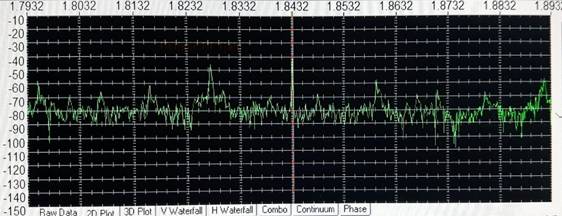
With no antennas connected, the noise floor on the SDR-IQ receiver is -130 dB
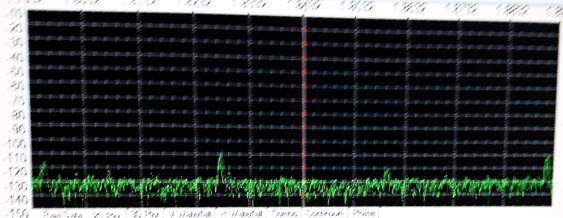
Connecting the Waller Flag to the South direction, the noise level is still at -130 dB (without any preamplifier) while the 1.843,2 KHz oscillator signal is at -105 dB
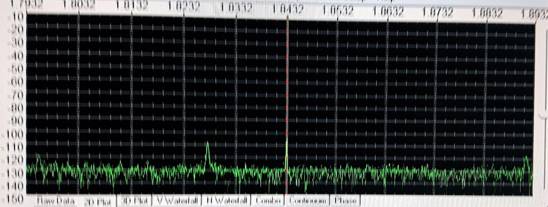
The KD9SV BF994 x5 preamplifier
With the insertion of the new low-noise preamplifier by KD9SV, which gives a variable gain from 25 to 40dB, the signal jumps to -65 dB, while the noise level goes up to around -100 dB (that is about 10 dB of S/N increase). At first I tried also a rugged Norton 10 dB preamplifier at the tower base, but things were getting worse, so only the KD9SV (with its FES) before the transceiver is better.
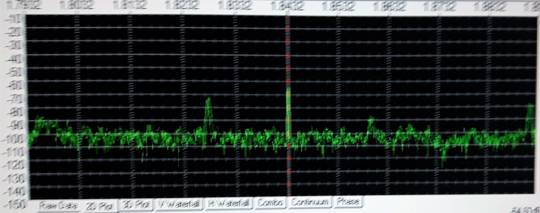
Now turning the Waller Flag to South West it appears a 20 dB side null (-85dB)
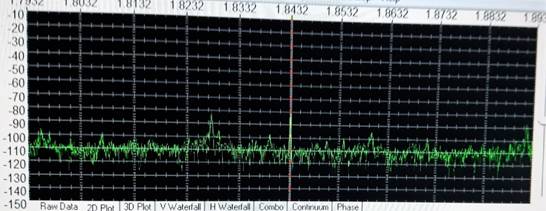
Going further to the West the signal jumps up to about -62 dB
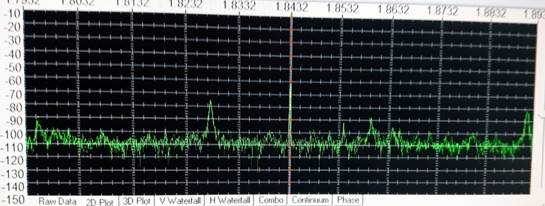
Turning the WF further to NW (towards the oscillator source) the signal reaches the peak of -58dB, but also with a 10 dB increase of the noise level.
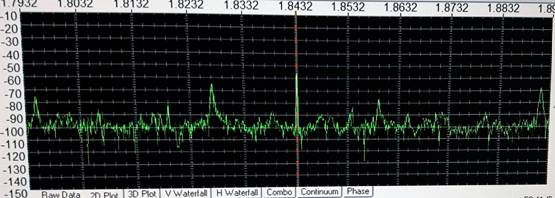
For a further check the preamplifier has been switched off: signal decrease is 40 dB while noise decrease is about 30 dB confirming the S/N difference of about 10 dB.
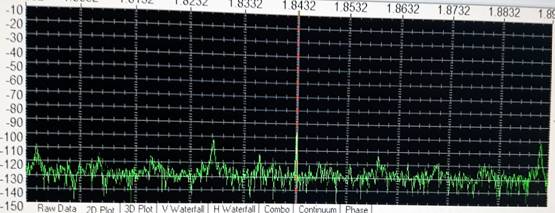
Tests on the AM Broadcasting MW band
I made also a few tests on the MW broadcasting band. The nearest AM station in this area is Radio Koper in Slovenia, at a distance of 90 km., 166° direction, on 1.170 KHz.
Its best signal is correctly coming from this direction (South-South East): - 65 dB.
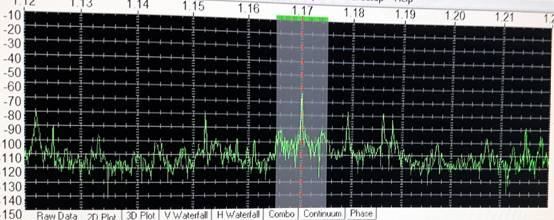
Curiously, the weakest one is not found on the back (i.e. towards North), but to the East: 30 dB down, almost in the noise, -95 dB! At the same time we see an increase of the signals on 1.152 and 1.179 KHz (two BC stations in Romania, 800 to 1.000 km at 83 degrees).
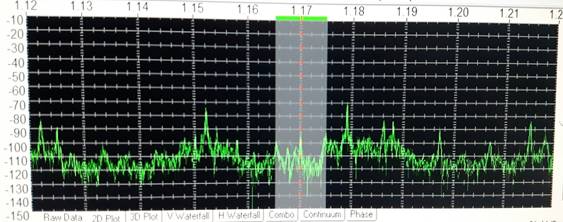
Effect of TX antenna detuning
All these tests were carried on at 3 PM. The next day I repeated the tests at 10 AM and got the same results. On the transmitting antenna (insulated vertical T at about 100 m. from the Waller Flag) I had added a detuning circuit, but no effect heard by switching it in and out. The SDR-IQ screen shows an increase of 2 dB on the signal when the TX antenna is detuned and the WF is pointed towards it, but no difference in the noise level.
The following picture shows the signal at -60 dB without detuning:
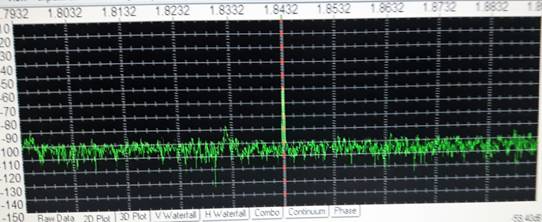
In the next graph, with TX antenna detuned, we can see a small increase of the signal to -58dB; only 2 dB, which cannot be detected by ear on strong signals, but could be useful with very low signals, under marginal conditions.

